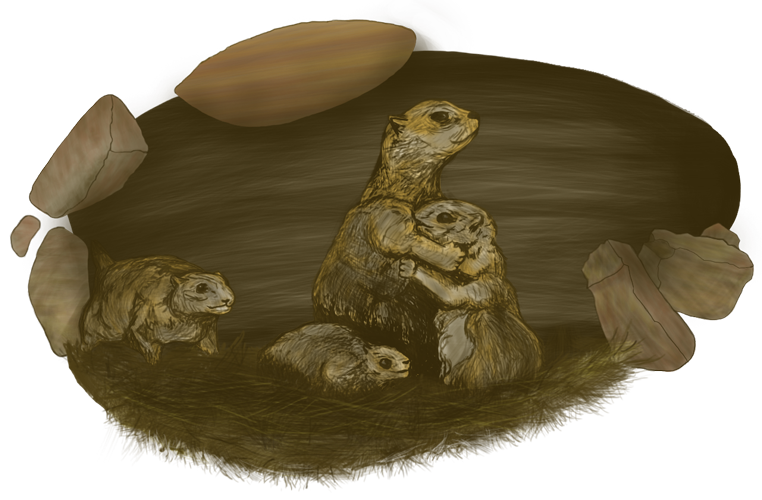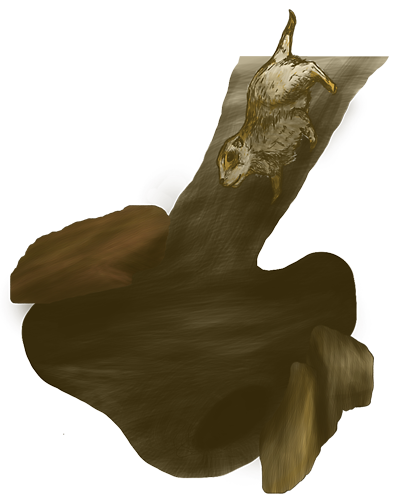Moving To New Digs!

- Since 2000, and the first known translocation of Gunnison's prairie dogs in northern Arizona, we have moved over 964 evicted prairie dogs to safe, new homes. We have also consulted and trained the staff of several federal agencies on conducting additional translocation efforts moving hundreds more prairie dogs to new homes on federal lands.
- After mapping the burrow locations and assessing the size of the colony, the first job on a translocation project is studying the family groups, or "coteries." Prairie dogs fare better when they are moved with their families.
- Another job that must be finished before we begin capturing is finding the new homes. Arizona Game and Fish Department approves of all of our release sites and so do the landowner, which also must be treated for plague. Abandoned burrows make the best new homes. Occasionally artificial burrow systems need to be created to help the release prairie dogs get started.
- We use humane traps to capture the prairie dogs, and once they are captured we quickly cover the traps with burlap, which we sometimes spray with a mist from a water bottle, to help keep the prairie dogs cool. They are sensitive to temperature changes and cannot be allowed to get too hot or too cold. Their burrows provide a regulated temperature.
- At the release site, we open a cage over the burrow entrance and once the prairie dog is secure inside the new burrow, we say a blessing. The different Blessings we use may be found by Clicking Here.
- Habitat Harmony volunteers return almost daily to the release site to provide supplemental feed for the translocated prairie dogs for at least two weeks after they are released and then continue to do observations during the first two months following a translocation, to see if the prairie dogs are adjusting to their new community. Monitoring continues for a full year.
- Habitat Harmony worked with the Arizona Game & Fish Department to write the TRANSLOCATION PROTOCOL FOR GUNNISON’S PRAIRIE DOGS IN ARIZONA
MOVING IS NEVER EASY!
(But we are sure that we have heard several of the females commenting on the new digs, something to the effect that, "The new place is really more roomy and the neighborhood is soooo quiet!")
Capture and Release Techniques
When prairie dogs are translocated, the best release sites are abandoned burrows. However, due to the scarcity of abandoned prairie dog colonies that are approved for Gunnison's prairie dog translocation, Habitat Harmony researched releasing prairie dogs into man-made burrows. This report also includes information on visual barriers.
A Message to Humans

"I used to be a city fellow. I grew up with the city noises of cars and trains and machines and humans. My family lived close to downtown Flagstaff not far from the railroad tracks along Route 66. What a busy, frightening place it was."
Read My Letter to You












